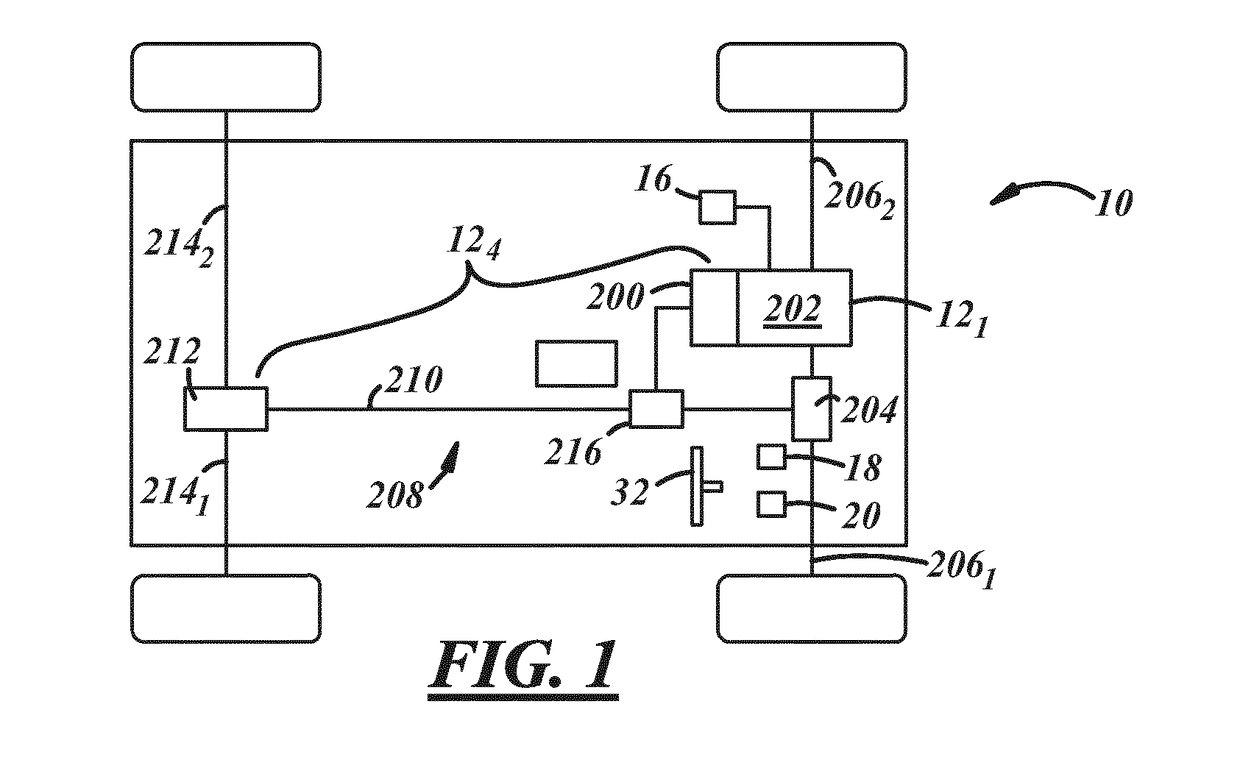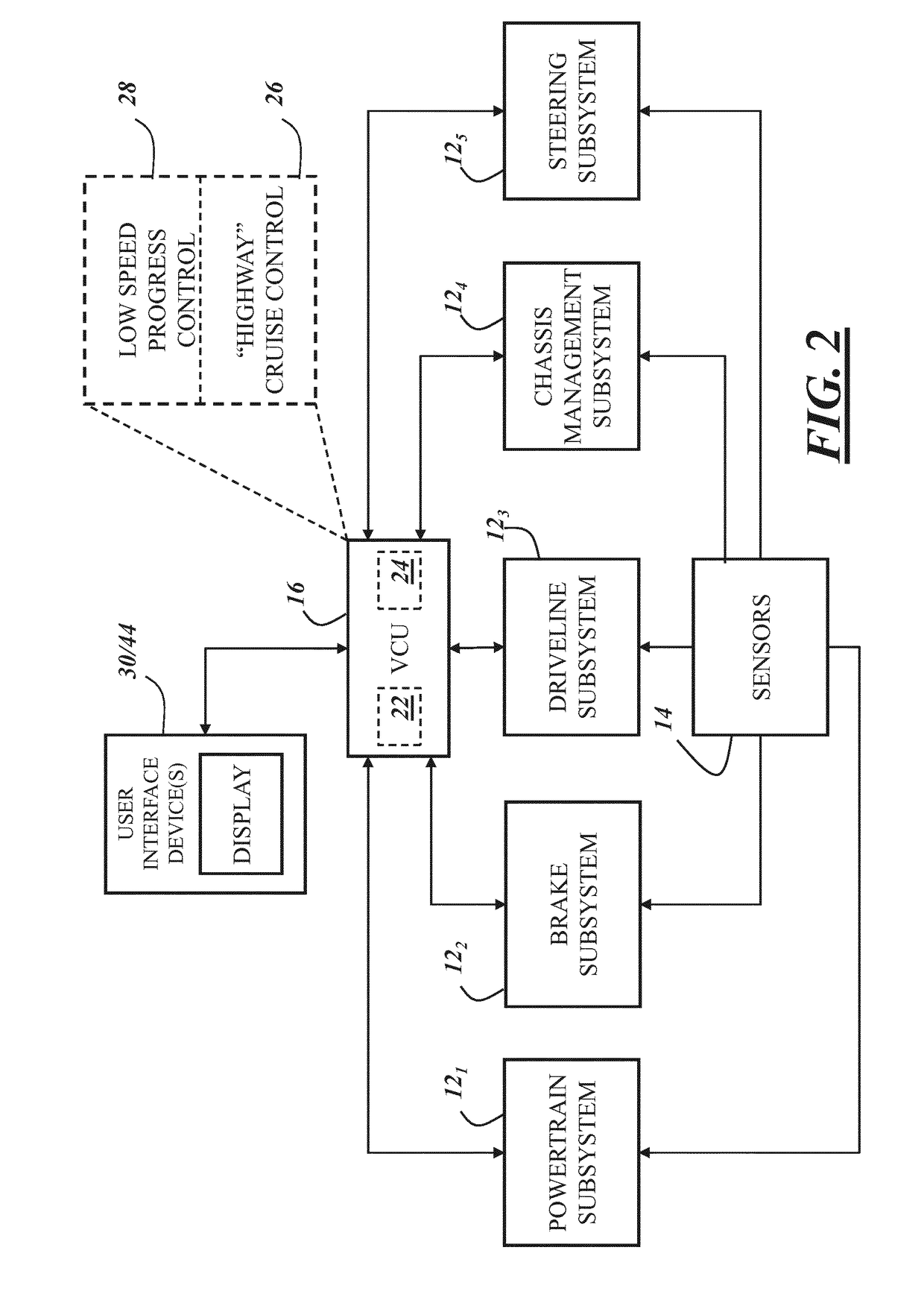Controlling the deceleration of a vehicle
- Summary
- Abstract
- Description
- Claims
- Application Information
AI Technical Summary
Benefits of technology
Problems solved by technology
Method used
Image
Examples
Embodiment Construction
[0019]The system and method described herein may be used to automatically control the deceleration of a vehicle to account for an increase in friction in the vehicle braking system as the vehicle decelerates. In an embodiment, the present system and method receive a signal indicative of a value of the speed of the vehicle and a signal indicative of a value of a brake pressure in the vehicle brake system, compare each of the values to a respective threshold, and when both values fall below the thresholds to which they were compared, command an increase in the drive torque applied to one or more wheels of the vehicle such that the increased drive torque acts against the braking of the vehicle as the vehicle decelerates to a stop or standstill.
[0020]References herein to a block such as a function block are to be understood to include reference to software code for performing the function or action specified in which an output is provided responsive to one or more inputs. The code may b...
PUM
 Login to View More
Login to View More Abstract
Description
Claims
Application Information
 Login to View More
Login to View More - R&D
- Intellectual Property
- Life Sciences
- Materials
- Tech Scout
- Unparalleled Data Quality
- Higher Quality Content
- 60% Fewer Hallucinations
Browse by: Latest US Patents, China's latest patents, Technical Efficacy Thesaurus, Application Domain, Technology Topic, Popular Technical Reports.
© 2025 PatSnap. All rights reserved.Legal|Privacy policy|Modern Slavery Act Transparency Statement|Sitemap|About US| Contact US: help@patsnap.com



